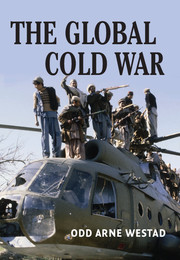Book contents
- Frontmatter
- Contents
- List of illustrations
- List of maps
- Acknowledgments
- List of abbreviations
- Introduction
- 1 The empire of liberty: American ideology and foreign interventions
- 2 The empire of justice: Soviet ideology and foreign interventions
- 3 The revolutionaries: anticolonial politics and transformations
- 4 Creating the Third World: the United States confronts revolution
- 5 The Cuban and Vietnamese challenges
- 6 The crisis of decolonization: Southern Africa
- 7 The prospects of socialism: Ethiopia and the Horn
- 8 The Islamist defiance: Iran and Afghanistan
- 9 The 1980s: the Reagan offensive
- 10 The Gorbachev withdrawal and the end of the Cold War
- Conclusion: Revolutions, interventions, and great power collapse
- Notes
- Index
5 - The Cuban and Vietnamese challenges
Published online by Cambridge University Press: 05 December 2012
- Frontmatter
- Contents
- List of illustrations
- List of maps
- Acknowledgments
- List of abbreviations
- Introduction
- 1 The empire of liberty: American ideology and foreign interventions
- 2 The empire of justice: Soviet ideology and foreign interventions
- 3 The revolutionaries: anticolonial politics and transformations
- 4 Creating the Third World: the United States confronts revolution
- 5 The Cuban and Vietnamese challenges
- 6 The crisis of decolonization: Southern Africa
- 7 The prospects of socialism: Ethiopia and the Horn
- 8 The Islamist defiance: Iran and Afghanistan
- 9 The 1980s: the Reagan offensive
- 10 The Gorbachev withdrawal and the end of the Cold War
- Conclusion: Revolutions, interventions, and great power collapse
- Notes
- Index
Summary
The dynamic of Cold War confrontation in the 1960s and 1970s depended to a high extent on the policies of the new revolutionary states. Cuba and Vietnam challenged not only Washington in defense of their revolutions; they also challenged the course set by the Soviet Union for the development of socialism and for Communist interventions abroad. In launching their defiance of the Cold War as it had developed up to the 1960s, the two countries provided inspiration for a range of left-wing states and movements in the Third World (and some groups in Europe and America). As often happens in history, this inspiration was – in most cases – more indirect than direct, and at times based on a very superficial knowledge of the Cuban or Vietnamese revolutions themselves, what could be called – if one wants to be charitable – creative misunderstandings. What mattered most, however, to the Third World movements that raised the banner of Che Guevara or Ho Chi Minh was that the example of these revolutionaries implied a license to take action for and by themselves, in spite of US military dominance or Soviet political dogma.
The Cuban and Vietnamese challenges to the Cold War would have been impossible without the early 1960s Sino-Soviet split in the international Communist movement. That Mao Zedong – himself, as he was fond of pointing out, the head of a Third World country – could claim to speak of Marxist-Leninist theory with an authority that he denied the Soviets, meant more room to maneuver for Marxists elsewhere.
- Type
- Chapter
- Information
- The Global Cold WarThird World Interventions and the Making of Our Times, pp. 158 - 206Publisher: Cambridge University PressPrint publication year: 2005

